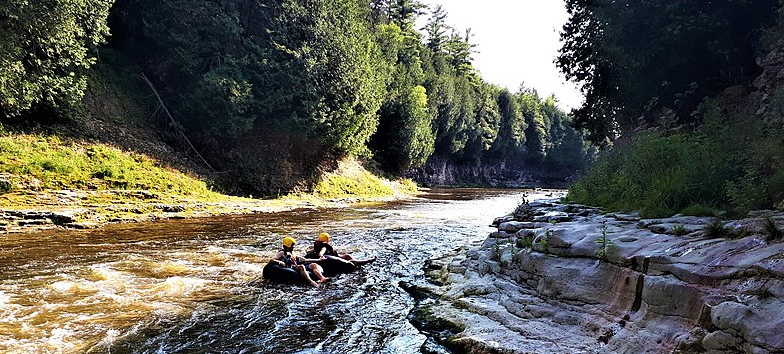This is another installment in Ibrahim Mustapha’s series of articles on the history of various communities in and around the Waterloo Region.
Image Credit: Mhsheikholeslami, CC BY-SA 4.0
Elora, a picturesque community located within the township of Centre Wellington in Ontario, Canada, boasts a rich history intertwined with the dramatic Elora Gorge and charming 19th-century limestone architecture. Today, Elora flourishes with a population of around 7,750, but its journey began much earlier, marked by the vision of a determined Scotsman and the captivating natural landscape.
In the Beginning
The story stretches back to the early 1600s when Roman Catholic missionaries ventured into the area, aiming to convert the indigenous population, particularly the Neutral Nation. However, the arrival of the first European settlers wouldn’t occur until 1817 when Roswell Matthews built his home, laying the groundwork for the future community.
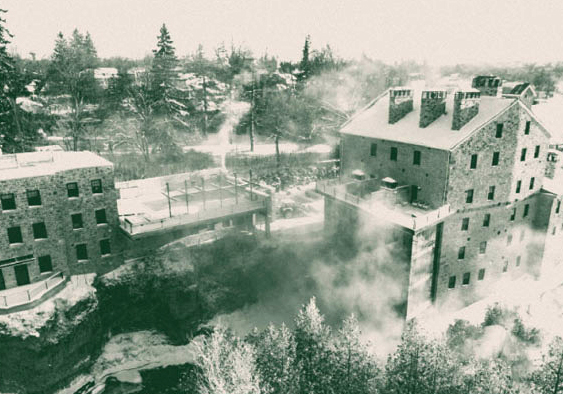
The year 1832 marks a pivotal moment in Elora’s history. Enter Captain William Gilkison, a Scottish-born officer who had served in the War of 1812. Fresh from his experiences in India, Captain Gilkison purchased a vast 14,000-acre tract of land near the awe-inspiring falls of the Grand River. Fueled by ambition, he envisioned a thriving settlement on this land, christening it “Elora.” The name itself held a special connection – inspired by his brother’s ship, which in turn drew influence from the Ellora Caves in India.
Lewis Burwell, a deputy provincial land surveyor, meticulously planned the layout for Captain Gilkison’s dream town in late 1832. The settlement, initially called Irvine Settlement, saw its first signs of development the following year with the establishment of a sawmill and a general store by the enterprising Captain Gilkison. Sadly, his vision wouldn’t be fully realized as he passed away in 1833.
While Captain Gilkison’s story might have ended prematurely, Elora’s development continued. Charles Allan and Andrew Geddes took the reins, laying out a town site on the western side of the Grand River. This strategic move proved successful. By 1848, village lots were readily being sold, and the settlement officially gained recognition by incorporating as a village in 1858. Interestingly, the heart of Elora’s commercial activity shifted over time. Initially concentrated near the grist mill by the captivating waterfalls on Mill Street, it gradually moved further up the hill.
The mid-1800s witnessed Elora flourishing as a significant agricultural marketplace. Downtown stores bustled with activity, offering a diverse range of goods to meet the needs of the growing community. The dependable waters of the Grand River provided power for the flour and sawmills, playing a crucial role in Elora’s economic engine. By 1869, the population had grown to a bustling 1,500 residents.
Growth in the late 1800s
Elora’s industrial landscape continued to evolve throughout the 1870s. Several additional mills, alongside two distilleries, a carpet factory, a tannery, and even two furniture factories, sprouted up, contributing to the town’s economic vibrancy. While smaller-scale private electricity providers existed earlier, a more extensive power supply system arrived in 1914 with the establishment of Ontario Hydropower.
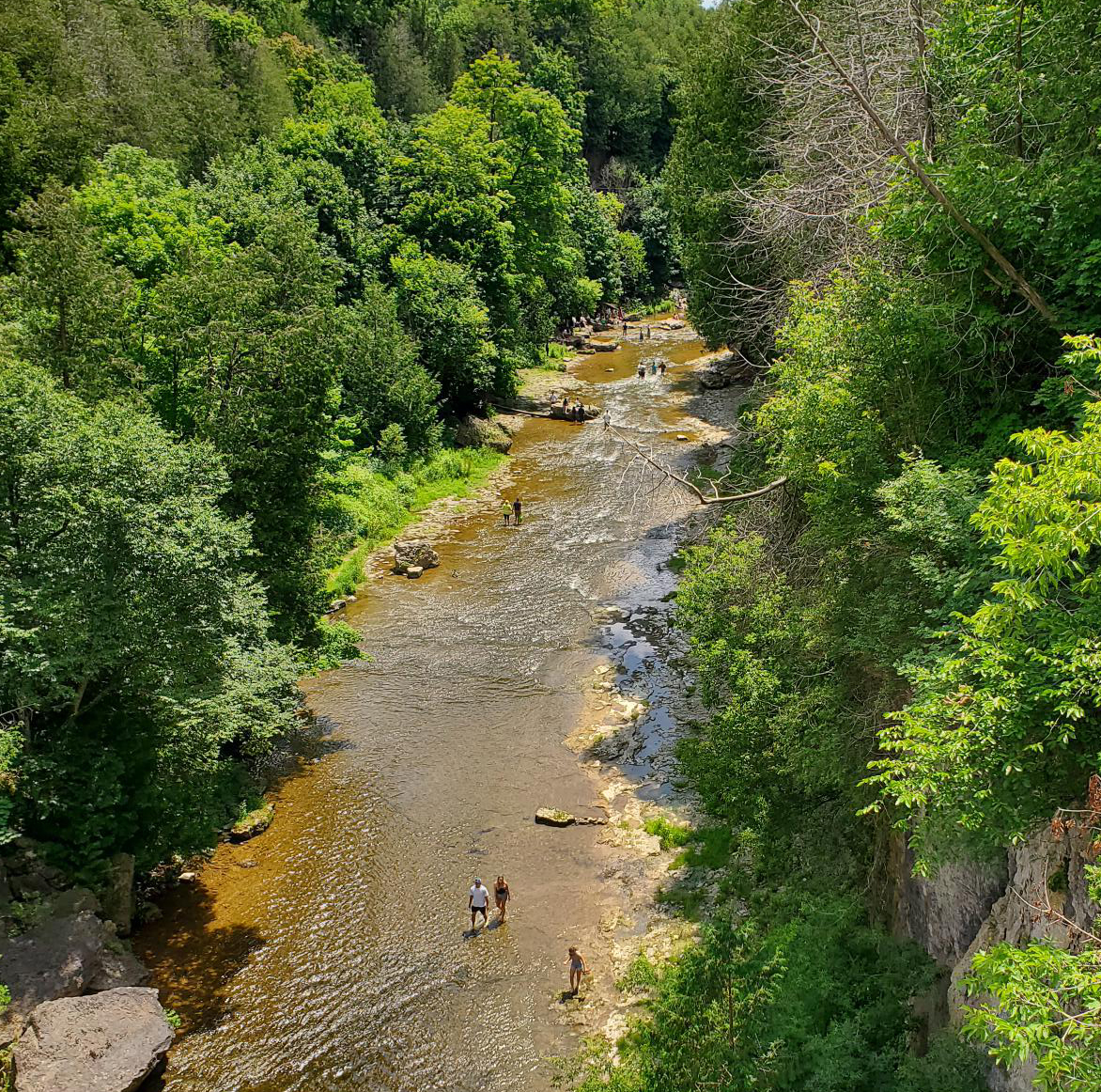
Elora’s story isn’t just about industry and commerce. From the very beginning, its natural beauty played a significant role in its development. The breathtaking Elora Gorge, carved by the Grand River over millennia, captured the imagination of early settlers and continues to be a major draw for visitors today. This majestic natural wonder, along with Elora’s charming 19th-century architecture, has transformed the town into a popular tourist destination.
Elora’s Economic Mosaic: A Blend of Industries, Agriculture, and Tourism
While Elora doesn’t have its own separate economic data, being part of the larger Centre Wellington township offers a glimpse into its economic landscape. Centre Wellington’s economy is a diverse mix, with agriculture playing a significant role… but it’s not the only story.
Manufacturing and construction lead the pack, employing roughly a quarter of the workforce. This sector provides a strong foundation for the local economy. Coming in a close second is healthcare and education, with nearly 20% of the workforce dedicated to these vital services. Rounding out the top three are wholesale and retail trade, ensuring a steady flow of goods and services to the community. Interestingly, agriculture and other resource-based industries, while present, employ a smaller portion of the workforce at around 6.4%.
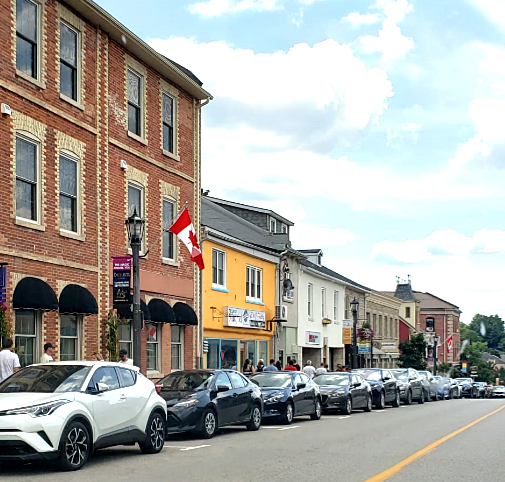
Elora benefits from several major employers within the township, including Jefferson Elora Corp., Nexans Canada, and Polycorp Ltd. These companies contribute significantly to the economic stability of the region. Healthcare is well-represented with Groves Memorial Hospital (down the road in Fergus), while Wellington Terrace and PR Donnelly provide essential services to the community.
Elora area in film
Beyond traditional industries, Elora has discovered a unique niche in the world of entertainment. The township actively encourages filming within its borders, and Elora, in particular, has become a popular destination for movie and TV show productions. The town’s charming, historic atmosphere provides an ideal backdrop for various scenes. For example, the Elora Quarry served as a location for “Angel Eyes” and the chilling “It.” The picturesque Elora Gorge and the nearby West Montrose Covered Bridge were also featured in “It,” showcasing the visual appeal of the area.
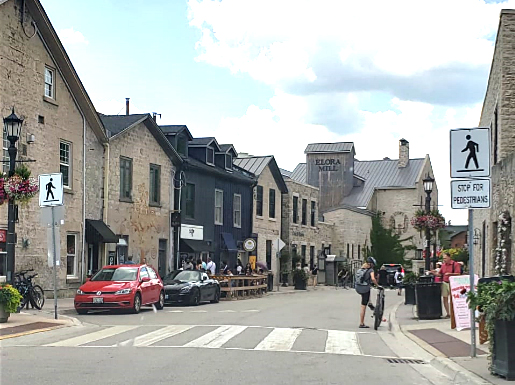
Elora’s embrace of filmmaking extends beyond local productions. The 10-part miniseries “Canada: The Story of Us” utilized Elora to stand in for scenes depicting World War II skirmishes in Europe. The Grand River, flowing through both Elora and Fergus, provided a scenic setting for the 1994 film “Trapped in Paradise.” This is just a glimpse of the productions that have chosen Elora as their stage.
Elora’s economy thrives on a blend of industries, with manufacturing, healthcare, and agriculture all contributing their share.
Elora’s journey from Captain Gilkison’s vision to a thriving community is clear evidence of perseverance, strategic planning, and the undeniable allure of its natural beauty. Today, Elora stands as a captivating blend of history, industry, and breathtaking scenery, offering a glimpse into the rich history of Ontario’s past.

About The Author – Ibrahim Mustapha
Ibrahim crafts high-performance content that connects brands with their audiences and drives impactful results. He has extensive writing experience across various niches, including SaaS, Technology, Health, Nature, and Lifestyle. His track record of earning five-star ratings from clients serves as a proof of his unwavering commitment to excellence.

